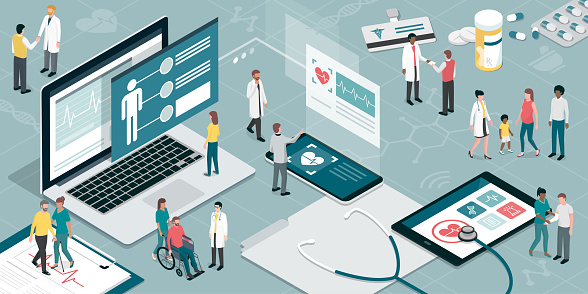
Bridging the Gap Between Data and Quality Improvement for Hospitals
Data only drives change when the right people see the right numbers at the right time and someone owns the follow-through.

Data only drives change when the right people see the right numbers at the right time and someone owns the follow-through.

Medical AI developers who prioritize data early will be the ones crossing the regulatory finish line faster and more reliably.

How Apella leverages technology to increase OR efficiency.

In the shift from isolated expertise to collective insights, shared data are revolutionizing patient care in EMS and hospitals.

Equity has to be built into the deployment strategy from day one, not treated as a future retrofit. That means prioritizing inclusion not only in the data but in the delivery, and recognizing that inclusive deployment is the foundation for inclusive datasets.

Healthcare today requires more than the partial snapshot offered by legacy technology. By integrating diverse data sources such as wearables, claims, communications, and ADT feeds, clinicians gain a comprehensive, real-time view of their patients’ health.

AI-powered platforms can collect data sets from disparate sources and check them for quality, duplication, relevance, and more. These platforms can then create even more extensive, understandable findings to help healthcare professionals make decisions.

The way forward isn’t bigger models. It’s smaller, smarter ones. Small Language Models (SLMs) are designed to do what LLMs can’t: learn from enterprise data and focus on specific problems.

During a recent panel discussion, healthcare leaders highlighted that the true promise of technology lies in ensuring that tools are practical, trusted and widely usable for both patients and clinicians.

For AI to truly revolutionize healthcare, it must understand the social, environmental, and emotional context that influences health outcomes in order to make interventions more targeted and effective. AI can only achieve this degree of understanding if it is fed novel data that reflects the human experience – data that is currently generated by tech-enabled services.

We’re in the middle of a fundamental shift that’s giving consumers more power and choice over their health coverage while creating healthy competition in the marketplace. Consumer expectations are justifiably rising, and people want a much more pleasant, frictionless and digital experience from their health plan – just like they get everyplace else in their lives.

Richard Fu details the company's approach to nutrition therapy and strategy for patients using GLP-1s.

Data is not optional; it is essential to financial stability and strategic growth. The organizations that thrive will be those that use data to lead, not follow.

For healthcare leaders, actionable SDOH insights are key to advancing equity and improving patient outcomes. By investing in comprehensive engagement strategies and leveraging technology, the healthcare industry can build trust, address barriers to care, and ensure that no patient falls through the cracks.

Moving clinical data management to cloud platforms can carry myriad benefits for healthcare organizations.

A clinically led, cross-functional team approach is essential during medical device integration projects to close data gaps, overcome common project pitfalls, complete optimal testing, and ensure proper oversight.